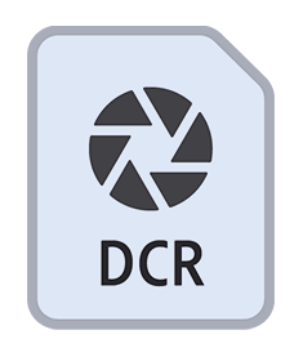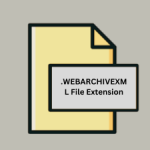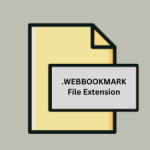.DCR File Extension

Shockwave Media File
| Developer | Adobe Systems |
| Popularity | |
| Category | Web Files |
| Format | .DCR |
| Cross Platform | Update Soon |
What is an DCR file?
.DCR file extension stands out as a bearer of Shockwave media, encapsulating interactive content and rich multimedia experiences.
From its origins to its technical specifications, this article delves into the depths of .DCR files, exploring their history, structure, conversion methods, and compatibility across different operating systems.
More Information.
During its heyday, Shockwave emerged as a dominant force in web development, enabling developers to push the boundaries of online interactivity.
The .DCR file extension served as the container for Shockwave media, housing intricate animations, dynamic presentations, and captivating games.
Websites adorned with Shockwave content became virtual playgrounds, captivating audiences with interactive experiences previously unseen on the web.
Origin Of This File.
The .DCR file extension traces its roots back to Macromedia, a pioneering software company renowned for its contributions to multimedia technology.
In the late 1990s, Macromedia introduced Director, a powerful authoring tool for creating interactive multimedia content. The director allowed developers to craft immersive experiences, blending graphics, animation, audio, and interactivity seamlessly.
The culmination of this innovation gave birth to Shockwave, a platform for delivering engaging multimedia content on the web.
File Structure Technical Specification.
.DCR file is structured to encapsulate various elements of Shockwave media, including vector graphics, bitmap images, audio files, scripts, and interactive components.
The file format follows a proprietary structure optimized for efficient delivery and playback within the Shockwave environment.
Its technical specifications are tailored to ensure compatibility with the Shockwave Player, the runtime environment necessary for executing .DCR files.
How to Convert the File?
Converting .DCR files to more modern formats may be necessary to ensure compatibility and longevity of multimedia content. Various tools and methods facilitate this conversion process, including:
- Adobe Director: The successor to Macromedia Director, Adobe Director offers built-in functionality for exporting .DCR files to alternative formats such as .SWF (Shockwave Flash) or .MOV (QuickTime Movie).
- Third-Party Conversion Tools: Several third-party software solutions specialize in converting Shockwave content to contemporary formats, providing options for customization and optimization.
- Manual Extraction: In some cases, individual assets within .DCR files can be extracted manually using extraction tools or by directly accessing the file structure, allowing for the reassembly of content in alternative formats.
Advantages And Disadvantages.
Advantages:
- Interactivity: .DCR files empower developers to create immersive, interactive experiences, fostering user engagement and participation.
- Rich Multimedia: From animations to audiovisual presentations, Shockwave content within .DCR files boasts high-quality multimedia elements.
- Cross-Platform Compatibility: While primarily associated with Windows environments, Shockwave content can be deployed across different platforms with the appropriate runtime support.
Disadvantages:
- Dependency on Shockwave Player: Viewing .DCR files requires the installation of the Shockwave Player, limiting accessibility on devices without compatible software.
- Security Concerns: Like other legacy technologies, Shockwave has faced security vulnerabilities over time, raising concerns about the safety of .DCR content.
- Diminished Relevance: With the evolution of web standards and the rise of alternative technologies, the relevance of Shockwave and .DCR files has diminished, leading to dwindling support and adoption.
How to Open DCR?
Open In Windows
- On Windows systems, .DCR files can be opened using the Shockwave Player, available for download from Adobe’s website or through legacy archives.
Open In Linux
- While native support for .DCR files on Linux are limited, compatibility can be achieved through emulation or virtualization solutions, enabling the execution of Windows-based Shockwave Players within a Linux environment.
Open In MAC
- Shockwave Player was also available for MacOS, allowing users to view .DCR files on Apple’s operating system. However, support for Shockwave on MacOS has waned over the years, necessitating the use of virtualization or emulation software to run legacy versions.













